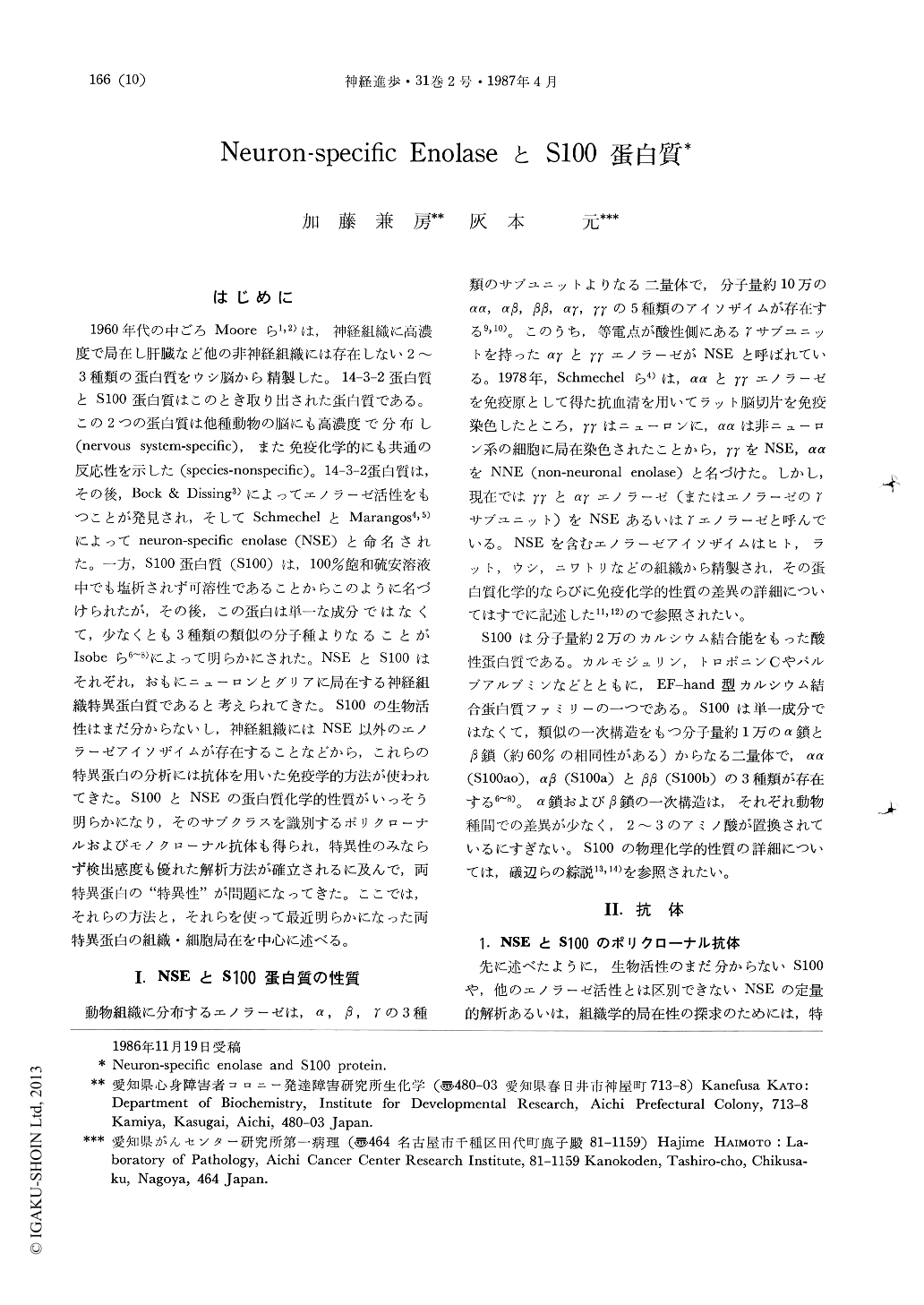Japanese
English
- 有料閲覧
- Abstract 文献概要
- 1ページ目 Look Inside
はじめに
1960年代の中ごろMooreら1,2)は,神経組織に高濃度で局在し肝臓など他の非神経組織には存在しない2〜3種類の蛋白質をウシ脳から精製した。14-3-2蛋白質とS100蛋白質はこのとき取り出された蛋白質である。この2つの蛋白質は他種動物の脳にも高濃度で分布し(nervous system-specific),また免疫化学的にも共通の反応性を示した(species-nonspecific)。14-3-2蛋白質は,その後,Bock & DisSing3)によってエノラーゼ活性をもつことが発見され,そしてSchmechelとMarangos4,5)によってneuron-specific enolase(NSE)と命名された。一方,S100蛋白質(S100)は,100%飽和硫安溶液中でも塩析されず可溶性であることからこのように名づけられたが,その後,この蛋白は単一な成分ではなくて,少なくとも3種類の類似の分子種よりなることがIsobeら6〜8)によって明らかにされた。NSEとS100はそれぞれ,おもにニューロンとグリアに局在する神経組織特異蛋白質であると考えられてきた。S100の生物活性はまだ分からないし,神経組織にはNSE以外のエノラーゼアイソザイムが存在することなどから,これらの特異蛋白の分析には抗体を用いた免疫学的方法が使われてきた。S100とNSEの蛋白質化学的性質がいっそう明らかになり,そのサブタラスを識別するポリクローナルおよびモノクローナル抗体も得られ,特異性のみならず検出感度も優れた解析方法が確立されるに及んで,両特異蛋白の"特異性"が問題になってきた。ここでは,それらの方法と,それらを使って最近明らかになった両特異蛋白の組織・細胞局在を中心に述べる。
Neuron-specific enolase (NSE) and S100 protein had been considered to be specific to the nervous system. However, the immunochemical and immunohistochemical studies have revealed that NSE and S100 protein are distributed not only in the nervous tissue but also widely in nonnervous tissues and cells.In this report, we presented the quantitative tissue-distribution of NSE (γ subunit of enolase), and the a and β subunits of S100 protein determined with a highly sensitive enzyme immunoassay system, together with the immunohistochemical localization of these antigens in various tissues or cells by employing monospecific polyclonal antibodies raised in rabbits. We described some drawbacks on the use of monoclonal antibodies for the immunochemical and immunohistochemical analysis of NSE and S100 proteins. Possible applicability of NSE and S100 protein as biomarkers for specified diseases is also discussed.

Copyright © 1987, Igaku-Shoin Ltd. All rights reserved.


